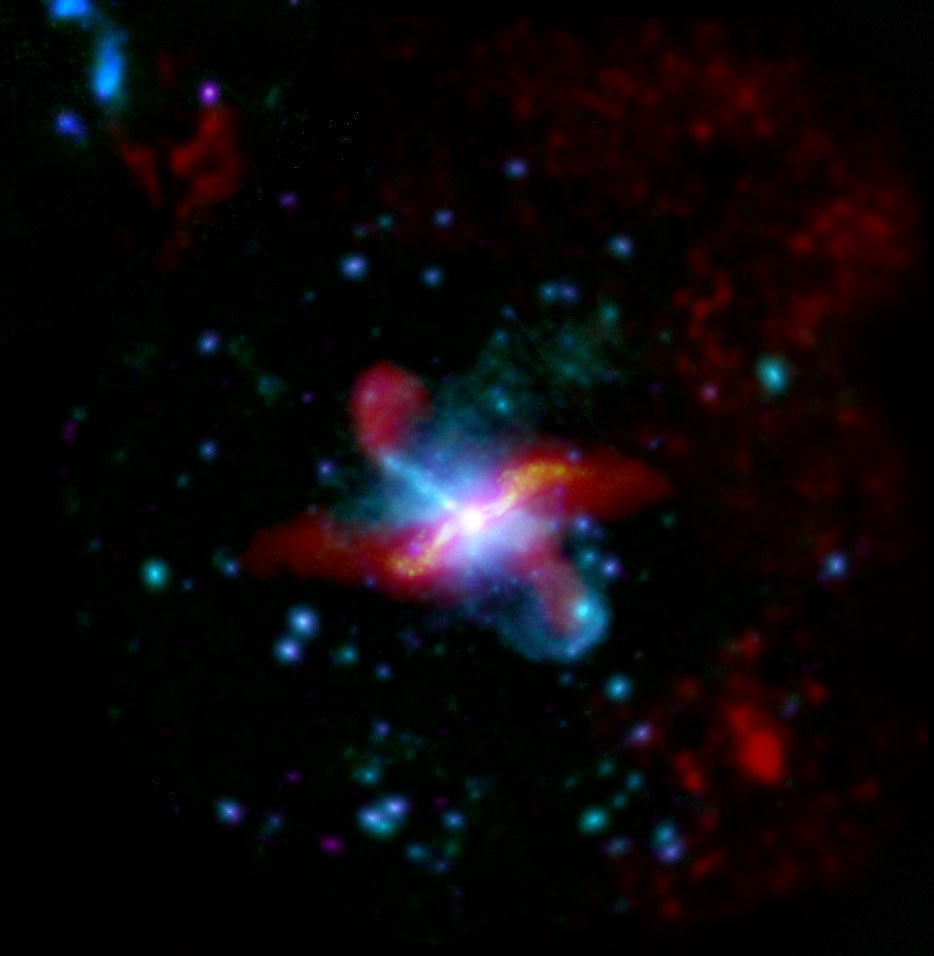[/caption]
The mysterious galaxy Centaurus A is a great place to study the extreme processes that occur near super-massive black holes, scientists say, and this beautiful new image from the combined forces of the Herschel Space Observatory and the XMM-Newton x-ray satellite reveals energetic processes going on deep in the galaxy’s core. This beautiful image tells a tale of past violence that occurred here.
The twisted disc of dust near the galaxy’s heart shows strong evidence that Centaurus A underwent a cosmic collision with another galaxy in the distant past. The colliding galaxy was ripped apart to form the warped disc, and the formation of young stars heats the dust to cause the infrared glow.
This multi-wavelength view of Centaurus A shows two massive jets of material streaming from a immense black hole in the center. When observed by radio telescopes, the jets stretch for up to a million light years, though the Herschel and XMM-Newton results focus on the inner regions.
At a distance of around 12 million light years from Earth, Centaurus A is the closest large elliptical galaxy to our own Milky Way.
“Centaurus A is the closest example of a galaxy to us with massive jets from its central black hole,” said Christine Wilson of McMaster University, Canada, who is leading the study of Centaurus A with Herschel. “Observations with Herschel, XMM-Newton and telescopes at many other wavelengths allow us to study their effects on the galaxy and its surroundings.”
Find more information on this image at ESA’s website.


Anyone care to explain the curvature of the jets?
My thought is that either the source has changed direction early on, or there is an external rotational force on the jets.
Perhaps the black hole is rotating on a different axis from the inner disc, or the disc is precessing as it collapses.
It seems that within the inner regions of Cen A precession of the jets from the SMBH at the nucleus is a likely cause of the ‘bent’ appearance that is observed: http://articles.adsabs.harvard.edu/cgi-bin/nph-iarticle_query?1983PASAu…5..241H&data_type=PDF_HIGH&whole_paper=YES&type=PRINTER&filetype=.pdf
However, as the jets widen and distort further from the nucleus (and are usually referred to as lobes, as seen in x-rays, sub-mm and radio images), they are interacting with the interstellar medium of Cen A as the ejected material expands and cools: http://arxiv.org/pdf/0706.4013v1.pdf
It’s probably safe to say that several mechanisms are responsible for the appearance of the jets in Cen A.